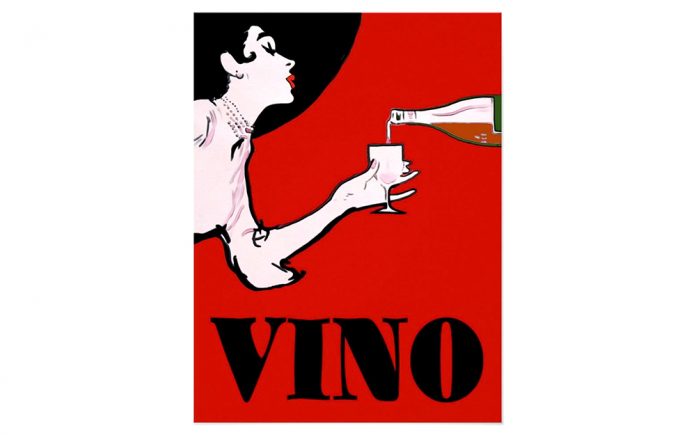
By Rick Riozza
Every so often, I enjoy just going off on a particular theme and simply discussing what’s on my wine mind. No big expectations here—actually, I think my “wine mind” has shrunk, considering the amount of world-wide wine news out there and the amount of info I can take in, let alone remember. So thanks for giving me a break.
What I do enjoy writing on—wine wise, are the changes in seasons. They not only assist us in registering time passing when months go by as fast as weeks, but in the game of wine, each season has its way with the individual vintage of the year’s product. If I were to look back to all of the weeks of articles I’ve written as your Vino Voice here in our beloved CV Weekly—close to 600 or so columns, I could safely lay a bet that many of the past articles usher in or address the entry of autumn, winter, spring and summer.
So as we soon arrive in autumn’s turn in the wine game, let me get my tasting notes together, make a few phone calls to old wine friends (obviously we don’t text), and plan a year’s calendar to cover what would be of interest to the active wine mind of readers. In the meantime, allow me to wander about and . . . just saying.
California’s Riboli Family Wines continue to amaze with their product prowess. Surely a wine shopper knows of the Stella Rosa line of colorful wines on the shelves. It has always been a Riboli Family Italian import from four generations back. Indeed, on the label of each bottle of wine, it tells us “Il Conte 1917”, which tells us in Italian that the Stella Rosa brand was founded back in 1917.
But in the last decade or so, the brand has been coming out with a new “fruit flavor” every year! And there seems to have been a cultural movement in causing the brand to expand wildly. The wine stats show that Stella Rosa sales have increased over 20% each year for the past ten!
And the culture we speak of, really appears to be the new and young wine drinkers in the Hispanic community. The Riboli Family founded the San Antonio Winery in Los Angeles back in 1917, so they’ve always been involved with Spanish-speaking customers. And it’s these fruity flavored wines that have attracted these young folks to appreciating wine as much as beer, cocktails and brandy.
An amusing tell-tale clue that the Riboli Family pursue, is PR on the Stella Rosa label. The wine notes on the label go on and on about the Italian vineyards that provide the juice for the wine. But when you read it—it’s in a foreign language, and one would first think that it is written in Italian. A closer look however, and one comes to see that it is written in Spanish. Of course!
By the way—the latest Stella Rosa fruit flavor wine is Cranberry. Don’t quote me on this, but I bet it would make for a bright tasty wine cocktail in some circles. And the Riboli Family is moving on to ultra-premium and luxury wine brands from France, Italy, New Zealand and other regions. The new division is called “Avanti” and the wine portfolio will range from $15 to $100 a bottle.
For those of you who like to quantify wine stats, this one always seems to come up. Which California varietal is the most popular? The answer continues to be Chardonnay. It’s been that way for the last 30 years! Coming up second is, of course, Cabernet Sauvignon. Again, it’s been that way for the last 30 years!
The past 10 years or so have shown a small decline in the sales of Pinot Noir and Merlot—which have been more or less tied in sales. The fairly “new wine kid on the block” is Pinot Grigio/Gris. Yep—it has taken over third place. And this is the California stuff—not the Italian juice: interesting. Pinot Noir is fourth; Merlot follows now as fifth, where Merlot, most interesting, was third in total sales from 1990 to 2020.
Next in line—I think you’ve guessed it: Sauvignon/Fume Blanc. The next one, surprisingly, is Moscato! Over White Zinfandel and Red Zinfandel—who would have thunk, although our spiel on Stella Rosa tells us sweet wine is as popular as ever. The last two of note are Riesling and Syrah.
For you French Champagne fans who wish to stay au courant when it comes to world class vintages and wish to sound oh-so-cool when ordering the right Champagne at the dinner table, Champagne Bollinger has just announced the latest vintage of La Grande Année. It is the 2014 vintage Champagne that is made from 61% Pinot Noir and 39% Chardonnay, sourced from 19 different crus, with 79% Grand Crus and 21% Premier. That’s a lot of effort.
This Champagne goes for a very reasonable price of $170 per bottle for all that effort. Wine Spectator has just written: “Racy acidity drives this mouthwatering Champagne, enlivening the rich panoply of flavors. Features a fine and creamy mousse that’s still a lively springboard for aromas and flavors of crème de cassis, glazed tangerine, roasted hazelnut, ground coffee, pickled ginger, and white blossoms; long and satiny, with minerally salt and chalk notes gaining momentum on the lasting finish.” Cheers!










































